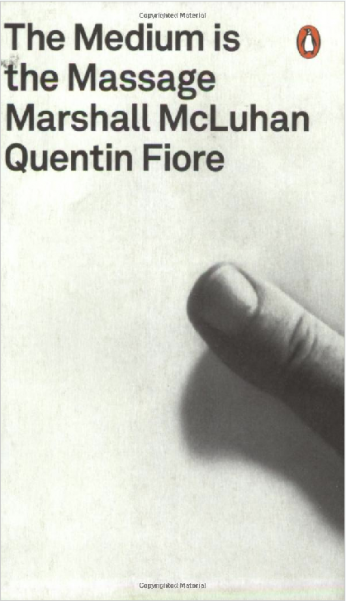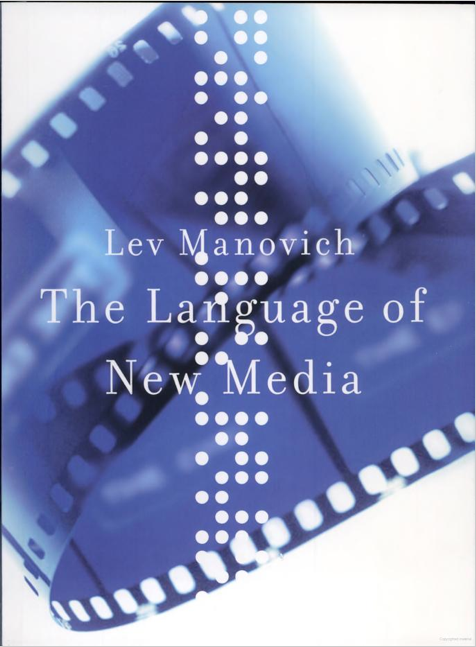HOME PAGE
D
igital
E
nvironment
'The Medium is the Message: An Inventory of Effects' Marshall Mcluhan & Quentin Fiore Touchstone Book. 1967
Position the media on the middle of out culture, everything is medium. Talking about the media as a environment, media is shaping our world.
'McLuhan’s definition of media, by his own admission, was broad: “any technology that ... creates extensions of the human body and senses” (McLuhan 1995, 239). Thus, for him clothing was an extension of the skin, the wheel; an extension of the foot, the book; an extension of the eye, etc. He believed that these technological extensions had the effect of amplifying a particular human sense to the detriment of the other four. Therefore technology effectively interfered with the sensory balance of individuals, which in turn affected the sensibilities of the societies in which they lived. This process was the subliminal cause of all the major cultural shifts that characterise different epochs in human history, such as "the renaissance" and "the industrial age."
McLuhan believed that in prehistoric times humankind (or preliterate man to adopt his sexist terminology) lived in a condition where all the senses worked together in "synesthetic" harmony. “Before the invention of the phonetic alphabet, man lived in a world where all the senses were balanced and simultaneous, a closed world of tribal depth and resonance.” (ibid, 241) Humankind lived in an “acoustic space;” without centre or margins. The only way preliterate people could communicate was through speech, so the exchange of information was sound based, instantaneous and social. McLuhan cites all the advantages of face-to-face communication and concludes that “Speech is utterance, or more precisely outering, of all our senses at once.” (ibid, 240) For this reason he was particularly concerned with the effects of the phonetic alphabet, and of printing. The implications of the phonetic alphabet were that the exchange of information was no longer instantaneous and that reading created individuals because of the solitary nature of the activity. The phonetic alphabet also led to the dominance of the sense of sight in the human sensorium, (the single and detached point of view) and, through the mastering of its abstract symbols, the development of abstract thought.'


Manovich identifies selection, compositing, and teleaction as the main operations of new media systems. Comparing the imaginatively-productive rifts between shots that characterize cinematic montage with the seamless blending of virtual and real objects in CGI works — and further iterating this comparison with an intriguing juxtaposition of Jurassic Park and the paintings of Socialist Realism — Manovich goes on to discuss the true correlate to the cinema and the novel brought about by new media, namely, the database.
Decode looks at three current themes within digital design: Code shows how computer code, whether bespoke and tailored, or hacked and shared, has become a new design tool; Interactivity presents works that respond to our physical presence; Network charts or reworks the traces we leave behind.
This project is an exploration into the crossroads of photography and motion pictures. It is a study of peak dance movements, captured simultaneously by 48 cameras aligned in a circle.
Erez Lieberman Aiden and Jean-Baptiste Michel from Harvard University use the 15 million books scanned and digitized by Google to show how a visual and quantitative analysis of text can provide insights about fields as diverse as lexicography, the evolution of grammar, collective memory, the adoption of technology, the pursuit of fame, censorship, and historical epidemiology.